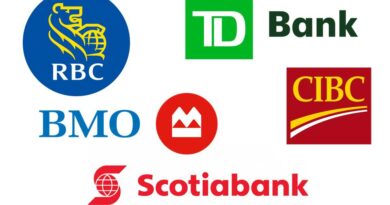How to transfer money from India to Canada?
Transferring money from India to Canada is mired with regulations and intricacies. The Foreign Exchange Management Act (FEMA) is a law enacted by the Government of India in 1999, to control this flow of foreign currency across Indian borders with Reserve Bank of India (RBI) acting as a watchdog. I am no expert on foreign exchange transfers so please do not consider my views as a recommendation of any sort.
Whether you are a Resident of India or have become a Non-Resident Indian, closely impacts the methods that you can use to transfer money out of India. In this article we are covering the transfer methods available official Resident Indians and not NRI's. Please read the official definition of a Non-Resident Indian below:
Definition of Non-Resident Indian
A Non Resident Indian (NRI) is an Indian Citizen who resides in India for less than one hundred & eighty two days during the course of the preceding financial year, or
- who has gone out of India or who stays outside India for the purpose of employment, or
- who has gone out of India or who stays outside India for carrying on business or vocation outside India, or
- who has gone out of India or who stays outside India for any other purpose indicating his intention to stay outside India for an uncertain period.
So in case you have not stayed in India for at least 182 during the last financial year (April to March), you have become NRI. In case you are still considered a resident Indian, your money transfers outside India shall be governed by the Liberal Remittance Scheme. Let us understand what that is.
Understanding Liberal Remittance Scheme
The Liberalised Remittance Scheme (LRS) is a facility available for making remittance up to USD 250,000 per financial year for permissible current or capital account transactions or a combination of both. Only resident individuals are eligible to avail of the facility under the LRS Scheme. This facility is not available to HUF, Partnership Firm, Trust, Society, Association of Persons, Body of Individuals, LLP, Company etc. It is mandatory to have a PAN number to make a remittance under this scheme and your bank/service provider may put certain additional restrictions. Remittances are permitted for overseas education, travel, medical treatment and purchase of shares and property, apart from maintenance of close relatives living abroad, gifting and donations. Kindly note that from 2019 the gifts have become taxable.
To whom can I remit for the purpose of "maintenance of close relatives"?
- Members of a Hindu Undivided Family OR
- Husband and wife OR
- One is related to other as follows:
- Father (including step-father)
- Mother (including step-mother)
- Son (including step-son)
- Son’s wife
- Daughter
- Daughter’s husband
- Brother (including step-brother)
- Sister (including step-sister)
What does the maintenance of close relatives mean to you? In case your status in Canada has become an NRI, your relatives, as specified under the definition above, may be able to transfer you the money.
You may read more about the different remittance schemes on the ICICI Bank website here.
Kindly note that it is a legal requirement that you comply with the LRS rules and for more information you read the detailed FAQ's on LRS by RBI.
Requirements for transferring money under LRS
Remittances under LRS do not require RBI approval. RBI has delegated the power to Authorized dealers like banks or third party entities like Thomas Cook. They have to satisfy themselves that the transfer of foreign currency is not in contravention of FEMA or Income Tax Act.
You would need to fill an A2 cum LRS Declaration form to transfer funds. In case you are outside India, you can sign and then scan the completed LRS Declaration and send it to the chosen payment partner in India.
Methods you can use to transfer money
Any remittance transaction has two cost components - the exchange rate & the transaction fee. Be objective to compare on both the parameters and don't fixate on fees only. You may also check with the Receiving entity (Canadian bank), just in case they have any restrictions around accepting such transfers and what charges might be levied by them.
Wire Transfers: As far as I know, only a few Banks (SBI, ICICI, HDFC, Citi) that operate in India have their own Nostro accounts. Having a Nostro account reduces the transaction fees and makes the transfer quicker. Some banks allow you to initiate an online money transfer request without visiting their branch in case you have a bank account with them. One such service operated by ICICI is Money2World. There might be restrictions on the amount that you are allowed to transfer under this channel.
Information required: Recipient’s full personal and banking information, including their bank’s name and SWIFT code. Short for Society for Worldwide Interbank Financial Telecommunication, a SWIFT code is an international bank code used for incoming transfers. Every bank has a unique SWIFT code that can be used to identify it in a global financial transaction such as a money transfer. You may also need a proof of identification (like a passport) and proof of your purpose of remittance.
Public sector banks offer good exchange rates in general with low markups as compared to the private banks. Though you would probably get better service at private banks.
Wire transfer by third party money changers like Transferwise are a good way to move your money as they are more competitive. They claim to use technology to lower transfer fees by connecting local bank accounts all over the world. You may read more on that here.
Foreign Currency Demand Draft: A Foreign Currency Demand Draft (FCDD) typically has lower fees than wire transfers, and are a good choice when you need to send a specific amount in a foreign currency. Funds may get credited into your foreign account within a day once you deposit the FCDD. Please check with your receiving bank for indicative timelines.
Travel Cards: Forex prepaid cards are specifically issued for the purpose of travel and can be freely used at merchants such as restaurants, hotels, shops, online shopping while traveling etc. You can also withdraw cash at ATM's. These cards cannot be used to transfer funds to an international account. You can, however, transfer money to your account via POS at foreign bank branch. This is known as POS Cash Advance facility which would be a chargeable facility. Such charges may be comparable or even higher than the charge for withdrawing cash from ATM's. Please inquire about them before making such a transfer.
Travel cards are only allowed to be issued before your travel begins outside India. In case you already have a travel and are abroad, it is possible to get it topped up, if your official status is still Resident Indian. Travel cards are certainly hassle free as they can be loaded instantly with the desired currency. Please note that cash withdrawal from ATM's using forex cards is most of the times chargeable. Most Canadian banks allow only a small amount to be withdrawn at a time like $400 or $1000. If you use this route, please make sure you inquire about all applicable charges. You may read more here for details on how to get a forex card.
Online Payment Services like PayPal, Pioneer require both Sender and Receiver to have an account registered with them. Fees is typically charged at both the ends giving you the least competitive rate. Please note that these services can only be used to send money abroad for paying business payments like invoices and bills.
Which service should you use?
The service suitable for you would depend on your needs and whether you are already in Canada. Money changers like Bookmyforex and Transferwise are the most competitive in terms of rates. You can use comparison portals like extravelmoney.com to search the most competitive ones quickly. Please read the Terms and Conditions carefully to understand what hidden charges may get levied under circumstances specific to you as there are quite a few complaints around that.
Wire transfers are generally considered more secure and provide higher convenience. They are typically preferred to move large amounts of money.
If you are already in Canada: Your preferred option could be to reload your forex card, if you already have one. It is both convenient and cost competitive.
Your second option might be to wire transfer funds through internet banking, in case your Indian Bank provides that facility.
If both of them do not work, you may have to request a 'close relative', as specified under the clauses above, to wire the money into your account, provided your receiving bank allows it.
What if you are a Non-Resident Indian?
We shall cover the various options to transfer money in a subsequent article soon.


